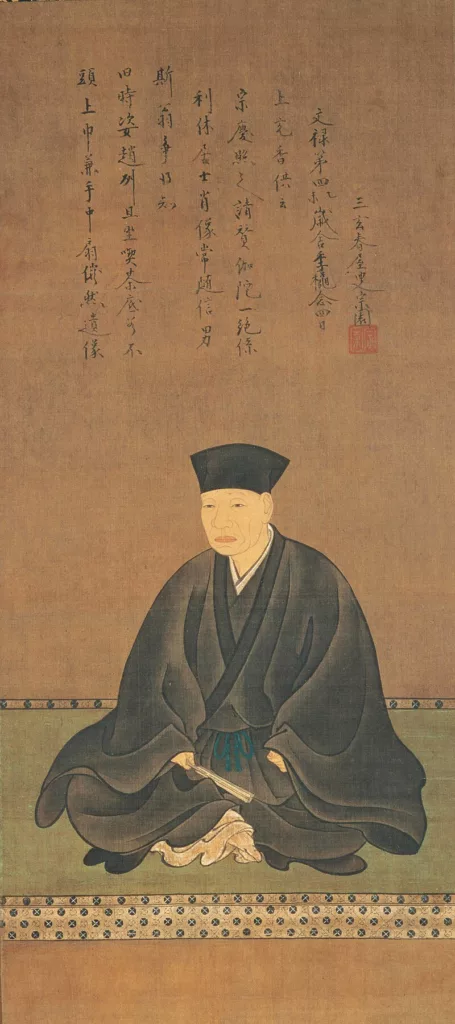
Omotenashi in digital customer engagement: openness and sincerity through first-party data
At first glance, the link between data marketing and the Japanese hospitality principles of omotenashi aren’t obvious. Bensen Koh explains why it shows how digital customer engagement should be done.

They say that Sen no Rikyu, the founder of the Japanese traditional tea ceremony and originator of omotenashi, would sometimes take up to a year just to prepare for a single tea ceremony, carefully selecting the right flowers, hanging scroll and confections for the customer and the season. He would continue to search for months on end until he found the perfect teacup that matched his guests’ preferences before holding the tea ceremony.
This invisible thought and care, founded on a deep understanding and empathy for the guest, is the essence of omotenashi. And it has come to represent the way that the Japanese service industry anticipates its customers’ needs, paying attention to the smallest detail.
In the minds of today’s consumers who aren’t fortunate enough to live in Japan, perhaps nothing seems as remote from the intimacy and personal warmth of omotenashi as the facelessness and frigidity of digital customer engagement. Endless emails are sent to the spam folder or blocked. Targeted advertisements are “stalkerish” and creepy.
This comes as no surprise given the prevalence of third-party data collection, where personal data is collected by an outsider that has no direct link to the business or its customers. Worse, these third-party outsiders often stitch together data sets using a variety of sources to sell on data marketplaces and exchanges without the customer’s knowledge.
But does digital customer engagement really have to be so impersonal and self-serving? After all, one might argue that both Sen no Rikyu and data scrapers want to gain a deeper understanding of their customers’ preferences and profiles. Of course, the lack of a human touch makes a big difference. But is that it? How can we try to apply the ideals of omotenashi to the way we handle our digital engagements? This article tries to cover a few core principles.
Openness
One of the roots of the word omotenashi is the phrase omote-ura nashi, which literally means to have no front or back. Just as how preparation is done out in the open in front of the customers in traditional Japanese tea ceremonies and sushi restaurants, the idea is for there to be nothing hidden. The average customer is becoming savvier and more conscious about how their data is used by businesses, and businesses need to be open about the data they collect and how they use it.
This openness also needs to go beyond mere compliance with transparency regulations. This is not about adding more text to overstuffed terms and conditions. Instead, customers should be provided with the information they need in an easily understood format, without any technical or legal jargon inappropriate to their level of expertise. Information should be provided in timely prompts that allow customers to make informed decisions.
Fairness
In a period in history where society operated in accordance with strict hierarchies, Sen no Rikyu strongly believed that all who enjoyed the tea ceremony were equal and that there should be no difference in status between samurai and merchants.
Customers today grow increasingly worried about digital profiling, distrustful of the “algorithm”, and apprehensive about AI systems. There is an important difference between offering customised, bespoke services and discrimination. Data should always be used to enrich a customer’s experience and not to judge or evaluate them.
Admittedly, this might not always be so clear when diving into the mechanics of algorithms and AI models, but a decent start would be to make sure that everyone can enjoy and have equal access to the same basic data rights.
Sincerity
In contrast with tipping culture, where good service is rewarded by some financial profit, omotenashi is performed without the expectation of something in return. Not only is there no tipping culture in Japan, but in certain circumstances, it can be considered rude; some staff might even get offended. Instead, service is provided purely and sincerely for the improvement of the customer’s experience, and not for any specific monetary gain. In fact, the Japanese katakana transcription of the English word “service” (サービス) has the additional meaning of “being a free thing”.
This does not mean that you cannot ever try to sell to customers or introduce them to new products or services. Plainly that is something done by all businesses, including Japanese ones. Instead, the key point here is the importance of thinking about digital customer engagement beyond the traditional sales funnel. Digital channels should be used to improve the customer’s experience and to share things with them. This can be done by creating a community, establishing channels to take in suggestions or feedback, sharing content that they would be interested in, and even holding free community events or webinars that would be of interest to them.
Mutual trust
Unlike the maxim “customer is king”, omotenashi is a two-way street where trust and respect must go both ways. It is not a master-servant relationship where one side is subservient to the other. Instead, it is about establishing a relationship where both sides recognise the role of the other, and both sides strive toward mutual satisfaction.
Taking these key principles into consideration, it becomes clear that third-party data practices are completely incompatible with the core ideals of omotenashi. When customer data is collected from unrelated sources and sold to others without the customer’s own knowledge, there is no relationship with the customer – the customer has become the product. Building a mutually respectful relationship requires a direct and open connection with its customers. Businesses need to adopt first-party data practices where they collect data directly and willingly given up by their customers through key touchpoints along the customer journey, such as account creation or purchase confirmation.
Research shows that people expect businesses to use data to provide personalised services. But this has to be information that people willingly share about themselves, provided to their preferred and trusted providers.
The era of third-party data is in decline. These days, customers have become increasingly conscious about how their data is used. Policymakers around the world have reacted by putting in place more stringent privacy safeguards, and tech companies like Google (Chrome), Apple (Safari) and Mozilla (Firefox) are already phasing out third-party cookies. New technologies and techniques emerge and ebb away.
Even as businesses adapt and adopt these new tools, the long history of Japanese omotenashi reminds us of what we already know – that trust will always be the most important intermediary.
This article has been tagged as a “Great Read“, a tag we reserve for articles we think are truly outstanding.
More Great Reads
- Generative AI is talking, but is anyone actually listening?
- ChatGPT is the real deal – and it’s going to change the world
- The 5 pieces of tech I wish I had at Burning Man
NEXT UP

Ryan Beal, CEO & Co-Founder of SentientSports: “Sports generate some of the richest datasets globally”
We interview Ryan Beal, CEO & Co-Founder of SentientSports, a startup using AI in fan engagement and athlete protection on social media.

Paris 2024: The greenest games ever
How the Paris 2024 Olympic Gamers organisers have lived up to their promise that this is the greenest Olympics ever

Salesforce, Workday team up to launch AI employee service agent
Salesforce and Workday have marked their new strategic partnership with the launch of an AI-powered assistant to handle employee queries.

